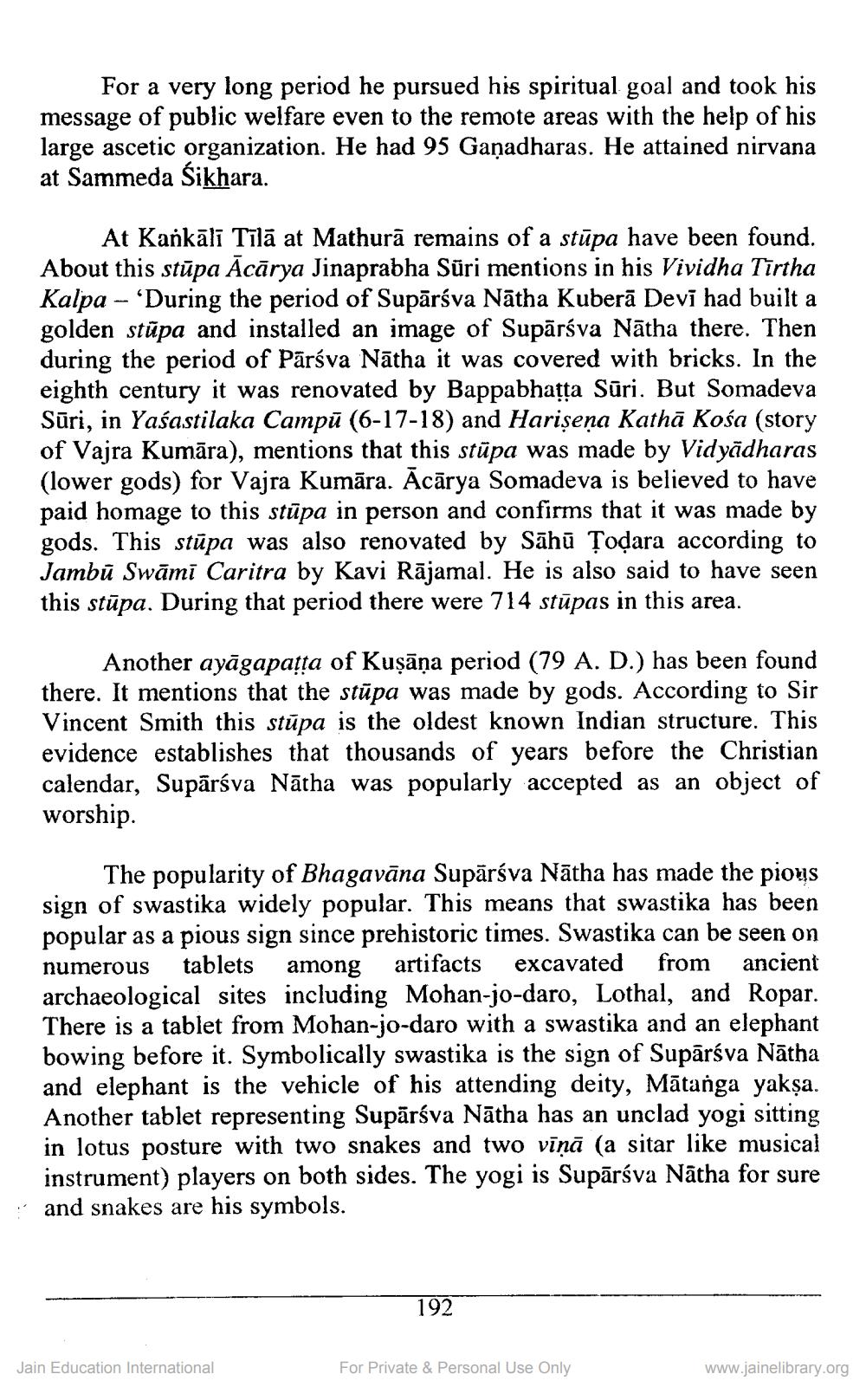________________
For a very long period he pursued his spiritual goal and took his message of public welfare even to the remote areas with the help of his large ascetic organization. He had 95 Ganadharas. He attained nirvana at Sammeda Sikhara.
At Kankālī Tīlā at Mathurā remains of a stūpa have been found. About this stūpa Ācārya Jinaprabha Sūri mentions in his Vividha Tīrtha Kalpa - 'During the period of Supārśva Nātha Kuberā Devī had built a golden stūpa and installed an image of Supārśva Nātha there. Then during the period of Pārśva Nātha it was covered with bricks. In the eighth century it was renovated by Bappabhasta Sūri. But Somadeva Sūri, in Yaśastilaka Campū (6-17-18) and Harisena Kathā Kośa (story of Vajra Kumāra), mentions that this stūpa was made by Vidyādharas (lower gods) for Vajra Kumāra. Acārya Somadeva is believed to have paid homage to this stūpa in person and confirms that it was made by gods. This stūpa was also renovated by Sāhū Țodara according to Jambù Swāmi Caritra by Kavi Rājamal. He is also said to have seen this stūpa. During that period there were 714 stūpas in this area.
Another ayāgapatta of Kuşāņa period (79 A. D.) has been found there. It mentions that the stūpa was made by gods. According to Sir Vincent Smith this stūpa is the oldest known Indian structure. This evidence establishes that thousands of years before the Christian calendar, Supārśva Nātha was popularly accepted as an object of worship.
The popularity of Bhagavāna Supārsva Nātha has made the pious sign of swastika widely popular. This means that swastika has been popular as a pious sign since prehistoric times. Swastika can be seen on numerous tablets among artifacts excavated from ancient archaeological sites including Mohan-jo-daro, Lothal, and Ropar. There is a tablet from Mohan-jo-daro with a swastika and an elephant bowing before it. Symbolically swastika is the sign of Supārśva Nātha and elephant is the vehicle of his attending deity, Mātanga yakșa. Another tablet representing Supārśva Nātha has an unclad yogi sitting in lotus posture with two snakes and two vīņā (a sitar like musical instrument) players on both sides. The yogi is Supārśva Nātha for sure and snakes are his symbols.
192
Jain Education International
For Private & Personal Use Only
www.jainelibrary.org




